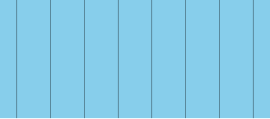Apeirogonal_hosohedron
Apeirogonal hosohedron
Geometric tiling of the plane
In geometry, an apeirogonal hosohedron or infinite hosohedron[1] is a tiling of the plane consisting of two vertices at infinity. It may be considered an improper regular tiling of the Euclidean plane, with Schläfli symbol {2,∞}.
| Apeirogonal hosohedron | |
|---|---|
 | |
| Type | Regular tiling |
| Vertex configuration | 2∞ [[File:|40px]] |
| Face configuration | V∞2 |
| Schläfli symbol(s) | {2,∞} |
| Wythoff symbol(s) | ∞ | 2 2 |
| Coxeter diagram(s) | |
| Symmetry | [∞,2], (*∞22) |
| Rotation symmetry | [∞,2]+, (∞22) |
| Dual | Order-2 apeirogonal tiling |
| Properties | Vertex-transitive, edge-transitive, face-transitive |




